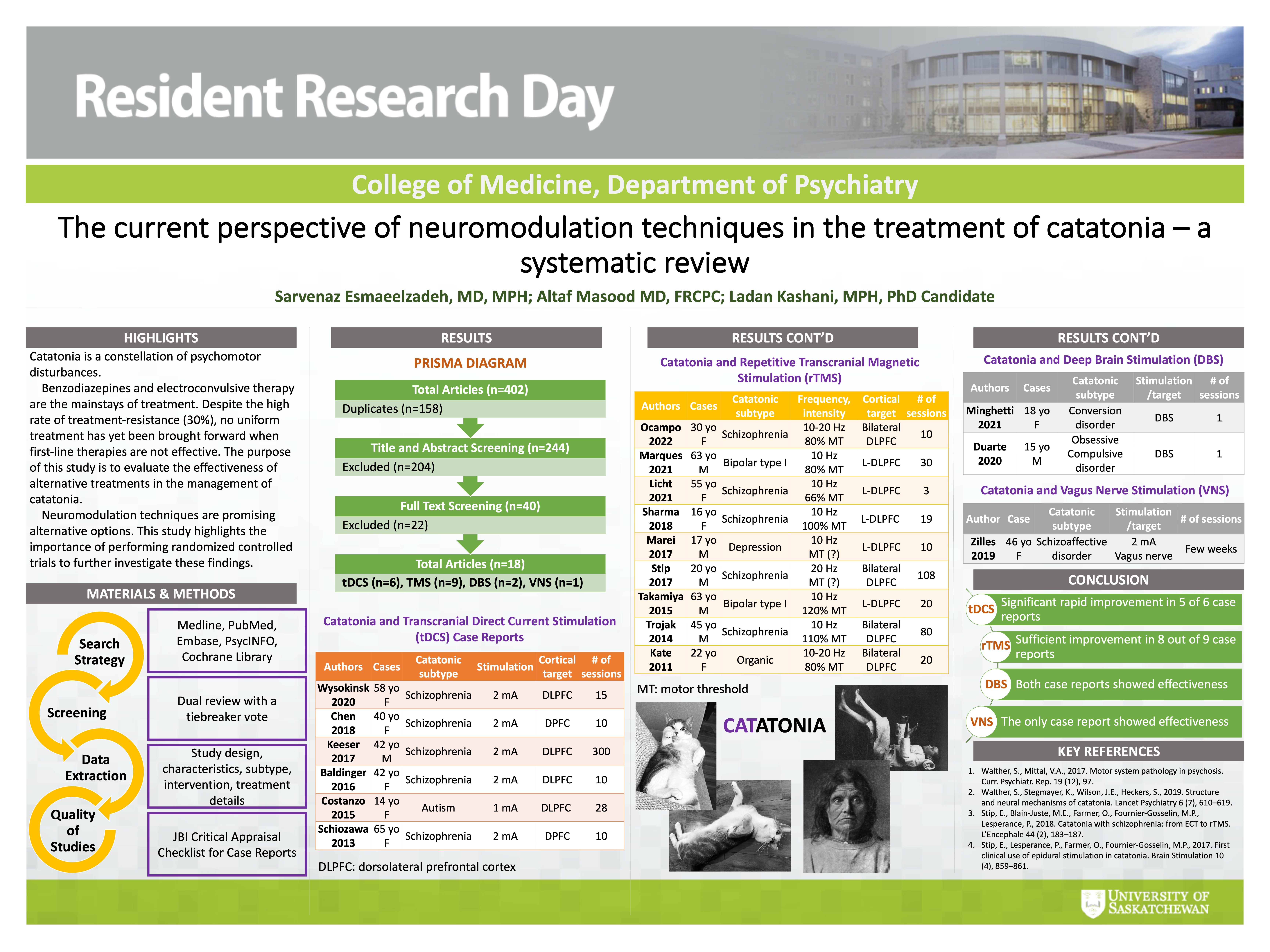
A2.9: The current perspective of neuromodulation techniques in the treatment of catatonia - a systematic review
Sarvenaz Esmaeelzadeh, Altaf Masood, Ladan Kashani
Introduction: Catatonia is a constellation of psychomotor disturbances. It can manifest as a state of marked unresponsiveness to catalepsy, waxy flexibility, posturing, mannerism, stereotypy, grimacing, negativism, echolalia, echopraxia, or marked agitation. According to DSMV, 3 or more of the aforementioned symptoms are required to confirm the diagnosis. Catatonia can occur in the context of both mental and physical disorders with potentially life-threatening complications. Benzodiazepines and electroconvulsive therapy are the mainstays of treatment and recommended as first-line therapies. Despite the high rate of treatment-resistance catatonia (about 30%), no uniform treatment has yet been brought forward when first-line therapies are not effective. Recently, more studies reported the role of other neuromodulation techniques including repetitive transcranial magnetic stimulation (rTMS) and transcranial direct current stimulation (tDCS), vagus nerve stimulation (VNS), and deep brain stimulation (DBS) in the management of catatonia. The purpose of this systematic review is to evaluate the effectiveness of alternative treatment strategies in the management of catatonia.
Method: We performed an extensive systematic literature search on the following electronic databases: Medline, PubMed, Cochrane Library, Embase, and PsycINFO. We also searched the ClinicalTrials.gov database for registered, but not yet published studies.
Results: In total, eighteen articles were identified (9 case reports on rTMS treatment, 6 on tDCS, 1 on VNS, and 2 on DBS). Sixteen out of eighteen publications reported clinical improvement in catatonic symptoms using the abovementioned neuromodulation techniques. The frequency of treatment sessions, follow-up periods and remission time were inconsistent between studies.
Conclusion: Based on the gathered published case reports, rTMS, tDCS, VNS, and DBS might be promising alternative treatment modalities and a valuable addition to the existing treatment spectrum for the management of catatonia in patients who failed benzodiazepine or ECT trials. This review highlights the importance of performing randomized controlled trials to further investigate these findings.
